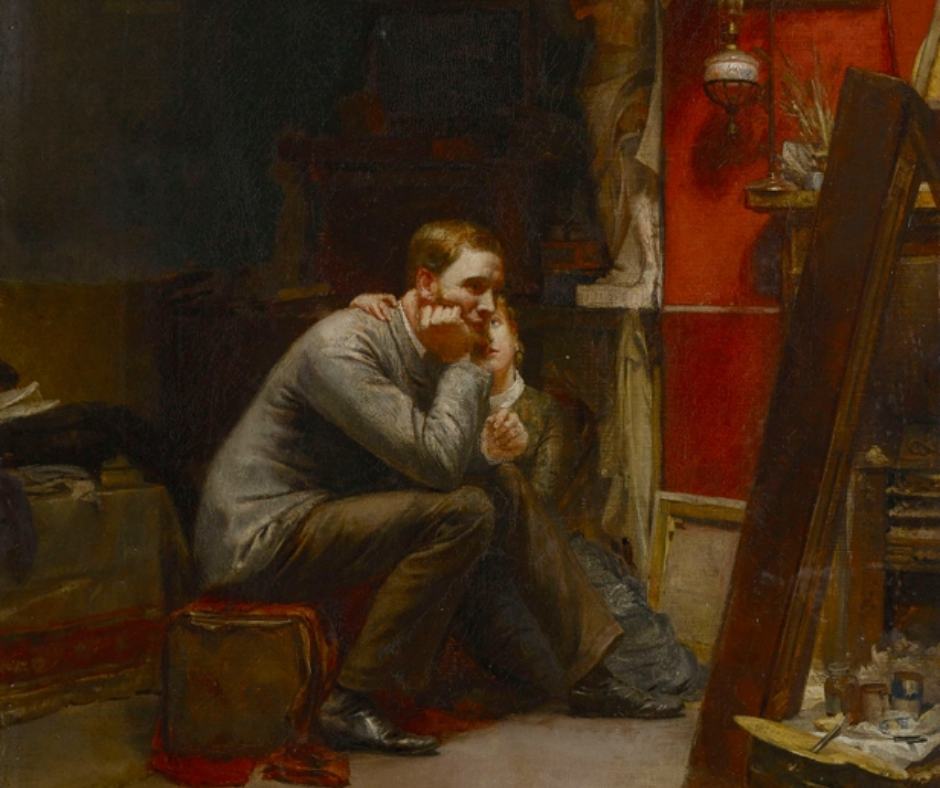
Make Peace with Lost Connections: What to Do If a Client or Colleague Ghosts You
Summary
Being ghosted by a client can feel painful and confusing—but it’s often more about their circumstances than your skills. This article explores the emotional impact of ghosting, unpacks the psychological reasons behind it (like decision fatigue and life overwhelm), and offers strategies for gracefully reaching out, maintaining professionalism, and protecting your peace. By reframing ghosting as a natural, albeit unpleasant, part of the creative journey, designers can move forward with confidence and resilience.
Reflection Questions
How do you typically react—emotionally and professionally—when someone stops responding unexpectedly?
What boundaries or systems can you put in place to protect your time and energy when working with new clients?
How can you reframe moments of rejection or silence as opportunities to grow in your communication and resilience?
Journal Prompt
Write about a time you felt ghosted—whether by a client, colleague, or even a friend. How did it affect you emotionally, and what story did you tell yourself about it? Looking back, how might you reinterpret that experience with more compassion—for them and for yourself?
Have you ever been in the middle of an exciting project discussion only to have your client suddenly disappear? One minute you’re brainstorming color schemes, layouts, and appropriate vendors. The next, you’re met with complete silence. Your inbox is as empty as your client’s explanation. It stings—especially when you’ve invested your heart, time, and creativity into a project.
But before you spiral into self-doubt, take a step back to consider what might really be happening—and how you can turn this awkward pause into a chance to grow and refine your process. The truth is, ghosting isn’t always about you.
Sometimes, it’s simply a reflection of the client’s circumstances. Whether they’re caught in an unexpected personal crisis, juggling other priorities, or simply overwhelmed by the magnitude of the project, their sudden disappearance usually says more about their life than it does about your work.
Still, it hurts.
“Rejection and physical pain are similar not only in that they are both distressing—they share a common somatosensory representation as well.”
This article was originally published in the Winter 2024-2025 issue of DesignDash Magazine. Read the full article and more here.
The Shock of Silence and What to Do About It

When that conversation goes dark, it can feel like a punch in the gut. Neurological research shows that social rejection, even in its most ambiguous forms, activates the same brain regions associated with physical pain. Yes, this sounds like a poetic metaphor, but it’s actually a scientifically backed response that can explain why ghosting leaves us feeling hurt and confused.
Researchers leading a 2011 study published in Proceedings of the National Academy of Sciences of the United States of America found that rejection is uniquely painful when compared to other emotions and physical injury. In this study, 40 people who recently went through a breakup were scanned with fMRI while they experienced two different tasks: one where they recalled painful feelings by looking at a photo of their ex-partner versus a friend, and another where they received hot (painful) versus warm (non-painful) heat on their arm.
The self-reported distress was similar for both tasks, and the brain scans showed that intense social rejection activated the same areas that process physical pain. As the study’s researchers put it, “combined fMRI and meta-analysis results suggest that the distress elicited in response to intense social rejection may represent a distinct emotional experience that is uniquely associated with physical pain.”
Our brains are wired to seek social connection, and when that connection is abruptly severed, it triggers a stress response. It’s human nature. We hope that by understanding that your brain’s reaction is a normal part of the process, you can begin to separate your self-worth from a client’s silence.
Unpacking Your Client’s Sudden Disappearance
Before you start questioning your abilities, it helps to unpack the many layers behind a client’s disappearance. Often, ghosting isn’t really about your work at all—it’s about the overwhelming nature of decision-making.
Scientific studies in behavioral economics and psychology have shown that having too many options can actually hinder decision-making rather than facilitate it. A classic study by Iyengar and Lepper (2000) demonstrated that when people are presented with an overwhelming array of choices—like an assortment of different jams—they can become paralyzed by the options. This leads to fewer purchases than when the choices are limited.
In the context of your design practice, this “paradox of choice” means that clients may sometimes go silent not because they’re dissatisfied with your ideas, but because they feel swamped by all the decisions they need to make.
Whether it’s selecting between multiple design styles, color palettes, or layout options, the sheer number of possibilities can lead to hesitation and even avoidance. Recognizing that this decision paralysis is a natural human response can help you reframe ghosting as a challenge of overwhelming choice, rather than a personal failing or a reflection of your talent.
Reading Between the Lines (But Don’t Spiral!)

When a client suddenly goes silent, it’s natural to replay every conversation in your head, wondering if you missed a subtle cue or said something offhand that didn’t land. But before you spiral into over-analysis, remember that their withdrawal might be less about you and more about what’s happening on their end.
Research in interpersonal communication shows that even small non-verbal signals—like brief hesitations or a slight shift in tone—can hint at internal conflict or uncertainty.
It’s possible that your client is quietly grappling with the weight of all the decisions they need to make, and what you perceive as ghosting is actually their way of coping with stress. While it’s not necessarily your responsibility to manage their emotions, as an interior designer you often navigate a deeply personal, human experience where some degree of handholding and interpretation is involved.
By tuning into these subtle patterns, you can adjust your approach—keeping your communication clear, supportive, and empathetic—while also maintaining healthy boundaries. This way, you help ease their decision-making process without taking on the full burden of managing their feelings.
Reaching Out One More Time

When you’ve given your client plenty of space and still hear nothing back, consider sending one final, gentle message. Instead of bombarding them with repeated follow-ups, craft a single note that shows genuine care and respects their situation.
You might write something like, “Hey, I hope everything’s okay. I haven’t heard back about our design plan and just wanted to check in to see if you have any questions or need any adjustments.” This final reach out leaves the door open for honest dialogue while maintaining both your professionalism and their comfort.
Accept That This Wasn’t the Right Time (or Client)
Sometimes when a client goes silent or rejects your ideas, it’s not necessarily about your work—it might just be that something major was happening in their lives or they simply weren’t ready to dive into the process.
If they were on the fence, this indecision could have eventually led to a string of change orders that not only cost you time and money but also tied up your team and frustrated your vendors. In these cases, it’s important to accept that the timing or the client just wasn’t right, and that moving forward with someone who isn’t fully committed can create more headaches down the line.
Focus on projects where both you and the client are ready to embrace the journey together.
Fuel your creative fire & be a part of a supportive community that values how you love to live.
subscribe to our newsletter
*please check your Spam folder for the latest DesignDash Magazine

Take Care of Yourself & Move Forward with Confidence
Let’s be honest—being ghosted hurts. It’s completely natural to feel disappointed, frustrated, or even a bit self-critical when a client just disappears. But remember, it’s not a reflection of your talent or worth. Taking care of yourself is just as important as following up with a client.
Whether you’re talking things over with fellow designers who know the ups and downs of this industry, diving into a creative hobby, or practicing a bit of mindfulness, investing in your own well-being helps you stay resilient. Your creative spirit is built on a wealth of experiences, not defined by one client’s silence.
Final Thoughts
Fuel your creative fire, thrive with support from peers, & make 2025 your firm’s best year yet!
JOIN THE DESIGNDASH COMMUNITY

At the end of the day, ghosting is just one of many bumps on the creative journey. Instead of letting it derail your passion, try to see it as a learning opportunity that sharpens your skills and deepens your understanding of client dynamics. Every project teaches you something valuable about how to refine your process and communication.
So, when a client vanishes into the void, don’t let it knock you down. Keep reaching out with genuine care, reflect on the experience, and trust that the next project (maybe your most rewarding yet) is just around the corner.









